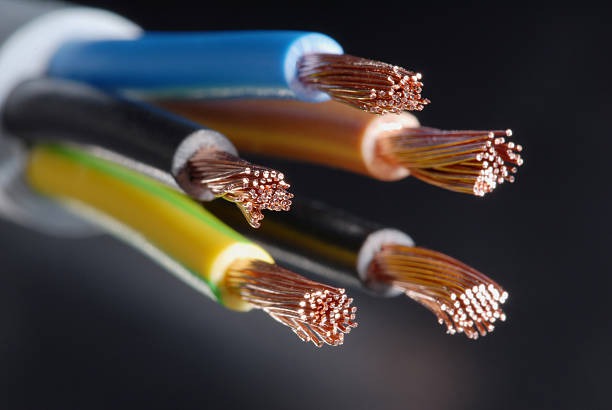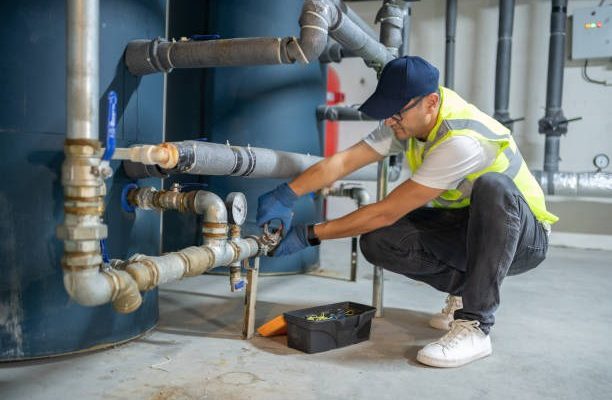Whether you’re flipping a light switch, charging your phone, or enjoying the benefits of sturdy construction, it’s impossible to deny the importance of metal wire in our everyday lives. But have you ever wondered how a solid chunk of metal transforms into the thin, flexible wire that keeps our world connected? The metal wire production process combines science, skill, and innovation to deliver the reliable products we rely on. Let’s unravel the journey from raw material to finished wire, sprinkled with fascinating processes, a dash of advanced technology, and a commitment to quality at every turn.
1. Understanding the Basics of Metal Wire Production
Before we discuss the nuts and bolts of wire production, it’s helpful to understand the basics. In essence, metal wire is produced by drawing metal through a series of dies that gradually reduce its diameter while increasing its length. The process transforms bulky metal rods—or, in some cases, coils—into slender strands capable of everything from transmitting electricity to binding packages.
The raw materials used in wire production are just as varied as their final applications. Copper, aluminum, steel, and various alloys are all common choices—each bringing unique properties to the wire, like conductivity, flexibility, and resistance to corrosion.
2. The Role of Raw Materials in Quality Wire
Choosing the Right Metal
Selecting the ideal metal or alloy is critical for wire makers. The choice depends on where and how the finished wire will be used. For example:
-
Copper is famous for its electrical conductivity, making it a favorite in electrical applications.
-
Aluminum is light yet strong and is often chosen for overhead power lines and aircraft components.
-
Steel wire brings durability to the construction and automotive industries.
Specialty Alloys and Additives
Sometimes, metals are blended into alloys to combine the strengths of different materials. Additives like nickel, chromium, or zinc can beef up resistance to corrosion, increase tensile strength, or improve flexibility, depending on the application’s needs.
3. Preparing the Raw Metal
Melting and Casting
The first big step involves turning the raw metal or scrap into a usable form. Metal is melted in a furnace, a process requiring intense heat and precision. Once liquefied, it’s commonly cast into large rods or billets, which serve as the feedstock for drawing wire.
Careful monitoring ensures the integrity of the metal during casting. Any impurities or irregularities at this stage could compromise the final wire’s strength or appearance.
Cleaning and Scaling
Once solid, billets or rods undergo a cleaning process to remove scale, oxide layers, or other contaminants. Depending on the final requirements, this can be as simple as a mechanical scrub or as sophisticated as acid cleaning.
4. Shaping by Rolling and Drawing
Hot and Cold Rolling
With the raw material ready, it’s time for shaping. Hot rolling is typically the first step—heating the metal billets and passing them through rollers to form a long, slender rod. Sometimes, more than one rolling operation is needed as part of a multi-stage reduction.
Once the rod reaches a certain size, it’s cooled and may undergo cold rolling, which further refines its shape and surface finish while also toughening the material.
Wire Drawing Process
The most critical stage in wire manufacturing is drawing, which literally involves pulling the metal rod through a series of progressively smaller dies.
-
Annealing: Periodic heating softens the metal, preventing breaks and ensuring greater ductility for the next reduction.
-
Lubrication: To reduce friction and wear on the dies, manufacturers apply lubricants during drawing.
-
Multi-pass Drawing: The wire often needs several passes through different-sized dies, each reducing its diameter and smoothing its surface.
The result? A slender, resilient wire is suitable for its final purpose.
5. The Science of Annealing
Why Annealing Matters
Let’s talk about annealing—a quiet but crucial hero in wire production. Drawing wire hardens and stresses the metal. Too much of that, and the wire could become brittle or snap. Annealing involves controlled heating and cooling, relaxing the internal structure, enhancing flexibility, and restoring the metal’s desired properties.
This cycle—draw, anneal, draw again—repeats until the ideal thickness and mechanical attributes are achieved. It’s a balancing act that demands close attention to temperature, timing, and atmosphere.
6. Specialty Processes for Modern Wire
Coating and Plating
No matter how tough the core material is, extra protection is often needed. Wire makers apply various coatings for performance boosts, such as:
-
Galvanizing: Applying a layer of zinc for corrosion resistance, especially in harsh environments.
-
Tinning: A thin coat of tin adds both conductivity and resistance to oxidation, which is ideal for electrical uses.
-
Plastic Coating: Insulation is important for electrical wire; sometimes, colored plastics are used for coding and added protection.
Precision in Fine Wire Drawing
Advanced processes, like Fort Wayne, IN fine wire drawing, exemplify the skill required to create wires thinner than human hair. These ultra-fine wires, often used in electronics or medical devices, demand meticulous control over every production parameter, from die size to drawing speed and cooling rates.
7. Quality Control and Inspection
Testing and Standards
Nobody wants to install a batch of faulty wire, so quality control is woven throughout every step. Wire undergoes tests for:
-
Diameter Uniformity: Ensuring it meets strict tolerances
-
Tensile Strength: Verifying flexibility and durability under stress
-
Surface Condition: Looking for flaws, cracks, or discoloration
Samples are pulled, stretched, and bent, while some get cross-sectioned under a microscope. Only the best material proceeds to final finishing and packaging.
8. Packaging and Shipment Considerations
After quality checks, the focus turns to packaging. Proper spool sizes, coiling methods, or straightened lengths are chosen based on destination and intended use. Protective wraps, moisture barriers, and custom arrangements ensure the wire arrives in top condition and is ready for installation or further processing.
Safe and efficient logistics matter, too—nobody wants kinks or tangles before the real work starts!
9. Environmental Responsibility in Wire Manufacturing
Recycling and Sustainability Practices
Today’s wire manufacturers pay increasing attention to environmental impact. Recycling scrap metal, minimizing waste, and reducing energy use are standard practices. Even the byproducts of wire production, like metal shavings or used lubricants, are often collected and processed for reuse or eco-friendly disposal.
Energy Efficiency and Next-Gen Technology
Modern plants invest in energy-efficient furnaces, closed-loop water systems, and smart automation to shrink their carbon footprint. Another growing trend is using renewable energy sources and safer chemical alternatives.
Have you ever wondered how wire manufacturers in Fort Wayne adapt to new regulations and sustainability demands? If so, you’d be impressed by their ongoing commitment to responsible sourcing and cleaner manufacturing methods.
10. Diverse Applications of Finished Wire
Wires Everywhere You Look
Think beyond electric cables—wire crops up in more places than you might expect. A few examples include:
-
Automotive Electronics: Harnesses, sensors, and power systems
-
Construction: Ties, reinforcement, mesh, and safety fencing
-
Medical Technology: Surgical tools, implants, and diagnostic devices
-
Consumer Goods: Jewelry, musical instruments, art, home accessories
Special Orders and Custom Alloy Wires
From custom thicknesses to specialty alloy blends, today’s customers expect wire makers to deliver tailored solutions. If someone asks an alloy manufacturer in Fort Wayne for a unique blend of properties—maybe a super-flexible, rust-resistant wire for marine applications—they rely on advanced metallurgical testing and precise production to meet those unique needs.
11. The Future of Wire Production
Trends Pushing the Industry Forward
Wire production isn’t standing still. Modern trends like automation, AI-based process optimization, and green technology are transforming the industry. In the near future, you’ll likely see:
-
Smarter sensors and data analytics for real-time process adjustments
-
Robotics handling precise wire spooling and packaging
-
Expanded use of recycled metals and bio-based lubricants
-
Better traceability—from mine to finished product—thanks to digital tracking
With these advances, wires will get even stronger, more reliable, and better tailored to every aspect of modern life.
Final Thoughts
From a hunk of raw metal to a coil of finely engineered wire, the production journey is equal parts art and science. Every phase—selecting raw materials, melting, drawing, annealing, coating, and packaging—is driven by a passion for quality and innovation. With the latest technology and a focus on environmental responsibility, today’s wire manufacturers are ready to meet the needs of tomorrow’s world.
So next time you switch on a device, take a moment to think about the journey inside every wire, connecting our world one strand at a time.




